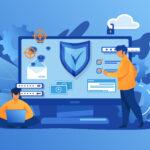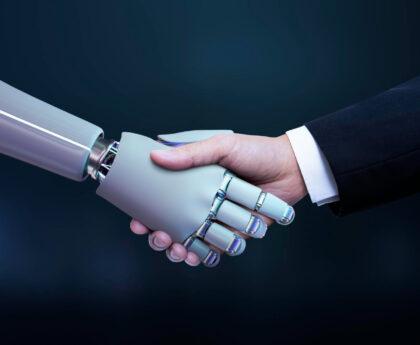Introduction:
The Internet of Things (IoT) has emerged as one of the most transformative technologies of the modern era. It has the potential to revolutionize various aspects of our lives, from homes and cities to industries and healthcare. In this comprehensive guide, we explore the future of IoT and its impact on society. We delve into the key trends, applications, and challenges associated with IoT, as well as the potential benefits and risks it brings. Join us on this journey as we uncover the potential of IoT in connecting the world and shaping our future.
Table of Contents:
- What is the Internet of Things?
- Key Trends in IoT
- Applications of IoT
3.1 Smart Homes and Cities
3.2 Industrial IoT
3.3 Healthcare and Wearables
3.4 Transportation and Logistics
3.5 Agriculture and Environmental Monitoring - Benefits of IoT
4.1 Improved Efficiency and Productivity
4.2 Enhanced Decision-Making
4.3 Increased Convenience and Automation
4.4 Enhanced Safety and Security - Challenges and Risks of IoT
5.1 Data Privacy and Security
5.2 Interoperability and Standardization
5.3 Ethical and Social Implications
5.4 Connectivity and Infrastructure - The Future of IoT
6.1 Artificial Intelligence and Machine Learning
6.2 Edge Computing and 5G
6.3 Blockchain and IoT
6.4 Sustainability and Green IoT
6.5 Human-Machine Interaction - Impact of IoT on Industries
7.1 Manufacturing and Supply Chain
7.2 Energy and Utilities
7.3 Healthcare and Medical Devices
7.4 Retail and Customer Experience
7.5 Transportation and Smart Cities - Challenges and Considerations for IoT Adoption
8.1 Security and Privacy Concerns
8.2 Data Governance and Ownership
8.3 Regulatory and Legal Frameworks
8.4 Skills and Workforce Development
8.5 Cost and Return on Investment - The Future of Connected Living
9.1 Smart Homes and IoT Devices
9.2 Connected Cities and Urban Planning
9.3 Healthcare and Remote Monitoring
9.4 Agriculture and Precision Farming
9.5 Education and Smart Learning Environments - Conclusion
Chapter 1: What is the Internet of Things?
The Internet of Things refers to the network of interconnected physical devices, vehicles, appliances, and other objects embedded with sensors, software, and network connectivity. These devices collect and exchange data, enabling them to communicate and interact with each other without human intervention. The IoT ecosystem encompasses a wide range of devices, from smart thermostats and wearable fitness trackers to autonomous vehicles and industrial machinery.
Chapter 2: Key Trends in IoT
The IoT landscape is constantly evolving, driven by technological advancements and changing consumer needs. Some key trends shaping the future of IoT include:
- Expansion of Connected Devices: The number of connected devices is rapidly increasing, creating a vast network of interconnected devices. This growth is fueled by advancements in miniaturization, affordability, and improved connectivity options.
- Edge Computing: Edge computing is gaining prominence as a way to process and analyze data closer to the source, reducing latency and enabling real-time decision-making. This approach is particularly crucial for time-sensitive applications such as autonomous vehicles and industrial automation.
- 5G Connectivity: The rollout of 5G networks promises faster speeds, lower latency, and increased capacity, paving the way for more widespread adoption of IoT devices and applications. 5G enables seamless connectivity and supports high-bandwidth applications, such as video streaming and augmented reality.
- Artificial Intelligence and Machine Learning: AI and machine learning are integral to unlocking the full potential of IoT. These technologies enable devices to analyze and interpret data, make intelligent decisions, and adapt to changing circumstances.
- Blockchain Integration: Blockchain technology offers enhanced security, transparency, and trust in IoT applications. It enables secure and decentralized data sharing, identity verification, and smart contracts, making it ideal for applications that require secure and tamper-proof transactions.
Chapter 3: Applications of IoT
IoT finds application in various domains, transforming industries and improving our daily lives. Some notable applications of IoT include:
3.1 Smart Homes and Cities: IoT enables the creation of smart homes and cities where devices and systems are interconnected to enhance comfort, energy efficiency, and security. Smart home devices, such as smart thermostats, lighting systems, and security cameras, can be controlled remotely and automated to optimize energy consumption.
3.2 Industrial IoT: Industrial IoT (IIoT) revolutionizes manufacturing and industrial processes by connecting machines, sensors, and systems. IIoT enables real-time monitoring, predictive maintenance, and optimization of production lines, leading to improved efficiency, reduced downtime, and cost savings.
3.3 Healthcare and Wearables: IoT plays a crucial role in healthcare, enabling remote patient monitoring, telehealth services, and smart medical devices. Wearable devices, such as fitness trackers and smartwatches, collect vital health data and provide insights for personalized health management.
3.4 Transportation and Logistics: IoT enhances transportation and logistics operations through vehicle tracking, route optimization, and fleet management. Connected sensors and devices enable real-time monitoring of vehicle conditions, fuel consumption, and cargo status, leading to improved efficiency and cost savings.
3.5 Agriculture and Environmental Monitoring: IoT-based solutions are transforming agriculture by enabling precision farming, soil and crop monitoring, and automated irrigation systems. Environmental monitoring sensors provide real-time data on air quality, water quality, and weather conditions, aiding in sustainable resource management.
Chapter 4: Benefits of IoT
The widespread adoption of IoT offers several significant benefits across various domains. Some key benefits of IoT include:
4.1 Improved Efficiency and Productivity: IoT enables automation, real-time monitoring, and predictive analytics, resulting in improved operational efficiency and productivity. Businesses can streamline processes, optimize resource allocation, and reduce manual intervention.
4.2 Enhanced Decision-Making: IoT provides access to real-time data and actionable insights, empowering businesses and individuals to make informed decisions. With IoT-enabled analytics, organizations can identify trends, anticipate problems, and proactively respond to changing circumstances.
4.3 Increased Convenience and Automation: IoT devices and systems offer increased convenience by automating routine tasks and providing seamless control and monitoring capabilities. Smart homes, for example, allow homeowners to control lighting, temperature, and security systems remotely.
4.4 Enhanced Safety and Security: IoT enables advanced security and safety features through surveillance cameras, smart locks, and alarm systems. IoT devices can detect and alert users about potential risks, such as intrusions, fire hazards, or leaks, enhancing overall safety and security.
Chapter 5: Challenges and Risks of IoT
While IoT offers significant benefits, it also presents various challenges and risks that need to be addressed. Some key challenges and risks of IoT include:
5.1 Data Privacy and Security: IoT devices collect vast amounts of sensitive data, raising concerns about data privacy and security. Unauthorized access to IoT systems can lead to privacy breaches, data theft, and potential misuse of personal information.
5.2 Interoperability and Standardization: With a wide range of IoT devices and platforms, interoperability and standardization become crucial for seamless communication and integration. Lack of interoperability can hinder the scalability and interoperability of IoT ecosystems.
5.3 Ethical and Social Implications: IoT raises ethical and social concerns, including the ethical use of data, the potential for surveillance, and the impact on employment. It is essential to establish ethical guidelines and regulations to ensure responsible and fair use of IoT technologies.
5.4 Connectivity and Infrastructure: IoT relies on robust connectivity infrastructure, including networks, protocols, and bandwidth. In remote areas or developing regions with limited connectivity, deploying IoT solutions can be challenging.
Chapter 6: The Future of IoT
The future of IoT is filled with exciting possibilities. Several key developments are expected to shape the future of IoT, including:
6.1 Artificial Intelligence and Machine Learning: AI and machine learning will play a crucial role in advancing IoT capabilities. AI-powered analytics will enable devices to analyze complex data sets, make intelligent decisions, and adapt to changing circumstances.
6.2 Edge Computing and 5G: Edge computing, combined with 5G connectivity, will enable faster processing and reduced latency. This will enhance real-time decision-making and enable more complex IoT applications that require quick response times.
6.3 Blockchain and IoT: Blockchain integration will enhance the security, privacy, and transparency of IoT systems. It will enable secure and tamper-proof data sharing, identity verification, and smart contract execution.
6.4 Sustainability and Green IoT: IoT has the potential to contribute to sustainable practices, such as energy-efficient systems, waste management, and environmental monitoring. Green IoT solutions can optimize resource usage and reduce environmental impact.
6.5 Human-Machine Interaction: The future of IoT will focus on improving human-machine interaction. Natural language processing, voice recognition, and gesture-based interfaces will enable seamless and intuitive interactions with IoT devices.
Chapter 7: Impact of IoT on Industries
IoT is transforming various industries, unlocking new opportunities and driving innovation. Here are some industries experiencing significant impact from IoT:
7.1 Manufacturing and Supply Chain: IoT enables smart manufacturing, optimizing production processes, and improving supply chain visibility. Connected sensors and systems enable real-time monitoring of equipment, inventory levels, and product quality.
7.2 Energy and Utilities: IoT enables the monitoring and management of energy consumption, grid optimization, and smart metering. It facilitates efficient energy distribution, reduces waste, and enables predictive maintenance of infrastructure.
7.3 Healthcare and Medical Devices: IoT is revolutionizing healthcare by enabling remote patient monitoring, telemedicine, and smart medical devices. It improves patient outcomes, reduces hospital readmissions, and enhances overall healthcare delivery.
7.4 Retail and Customer Experience: IoT enables personalized and immersive retail experiences through smart shelves, beacons, and connected devices. Retailers can gather customer data, offer personalized recommendations, and optimize store layouts for enhanced customer engagement.
7.5 Transportation and Smart Cities: IoT enhances transportation systems by improving traffic management, parking optimization, and public transportation efficiency. In smart cities, IoT enables better urban planning, efficient resource management, and enhanced citizen services.
Chapter 8: Challenges and Considerations for IoT Adoption
While the potential of IoT is immense, there are several challenges and considerations to address for successful adoption:
8.1 Security and Privacy Concerns: IoT devices are vulnerable to cyber-attacks, raising concerns about data privacy and system security. Robust security measures, including encryption, authentication, and regular updates, are essential to mitigate risks.
8.2 Data Governance and Ownership: IoT generates vast amounts of data, requiring proper data governance frameworks. Clear ownership and control over data, as well as compliance with data protection regulations, are crucial considerations.
8.3 Regulatory and Legal Frameworks: The evolving nature of IoT requires appropriate regulations to ensure responsible deployment and protect consumer rights. Governments and regulatory bodies need to establish clear guidelines and standards for IoT adoption.
8.4 Skills and Workforce Development: The successful implementation of IoT requires skilled professionals with expertise in IoT technologies, data analytics, and cybersecurity. Organizations need to invest in training and developing the workforce to leverage IoT effectively.
8.5 Cost and Return on Investment: IoT implementation can involve significant upfront costs, including hardware, infrastructure, and integration. Organizations need to carefully evaluate the potential return on investment and long-term benefits before embarking on IoT projects.
Chapter 9: The Future of Connected Living
The future of IoT holds exciting prospects for connected living. Here are some areas where IoT will shape our everyday lives:
9.1 Smart Homes and IoT Devices: Smart homes will become more interconnected and autonomous, with IoT devices seamlessly working together to enhance comfort, convenience, and energy efficiency. Voice assistants, smart appliances, and intelligent lighting systems will transform our living spaces.
9.2 Connected Cities and Urban Planning: IoT will enable the development of smart cities, with interconnected infrastructure and services. Intelligent traffic management, energy-efficient buildings, and citizen-centric services will contribute to sustainable and livable urban environments.
9.3 Healthcare and Remote Monitoring: IoT will revolutionize healthcare delivery by enabling remote patient monitoring, personalized treatment plans, and early intervention. Wearable devices and telemedicine services will empower individuals to take control of their health.
9.4 Agriculture and Precision Farming: IoT-based solutions will optimize agricultural practices through precision farming techniques. Connected sensors, drones, and AI analytics will enable efficient resource management, crop monitoring, and yield optimization.
9.5 Education and Smart Learning Environments: IoT will transform education by creating smart learning environments. Connected classrooms, personalized learning platforms, and immersive technologies will enhance student engagement and learning outcomes.
Chapter 10: Conclusion
The Internet of Things holds immense potential to connect the world and shape our future. It will revolutionize industries, enhance our daily lives, and drive innovation across various domains. However, to fully harness the power of IoT, we must address challenges such as security, privacy, and infrastructure. By doing so, we can build a connected world that offers improved efficiency, convenience, and sustainability. The future of IoT is bright, and its impact will continue to transform how we live, work, and interact with the world around us.





